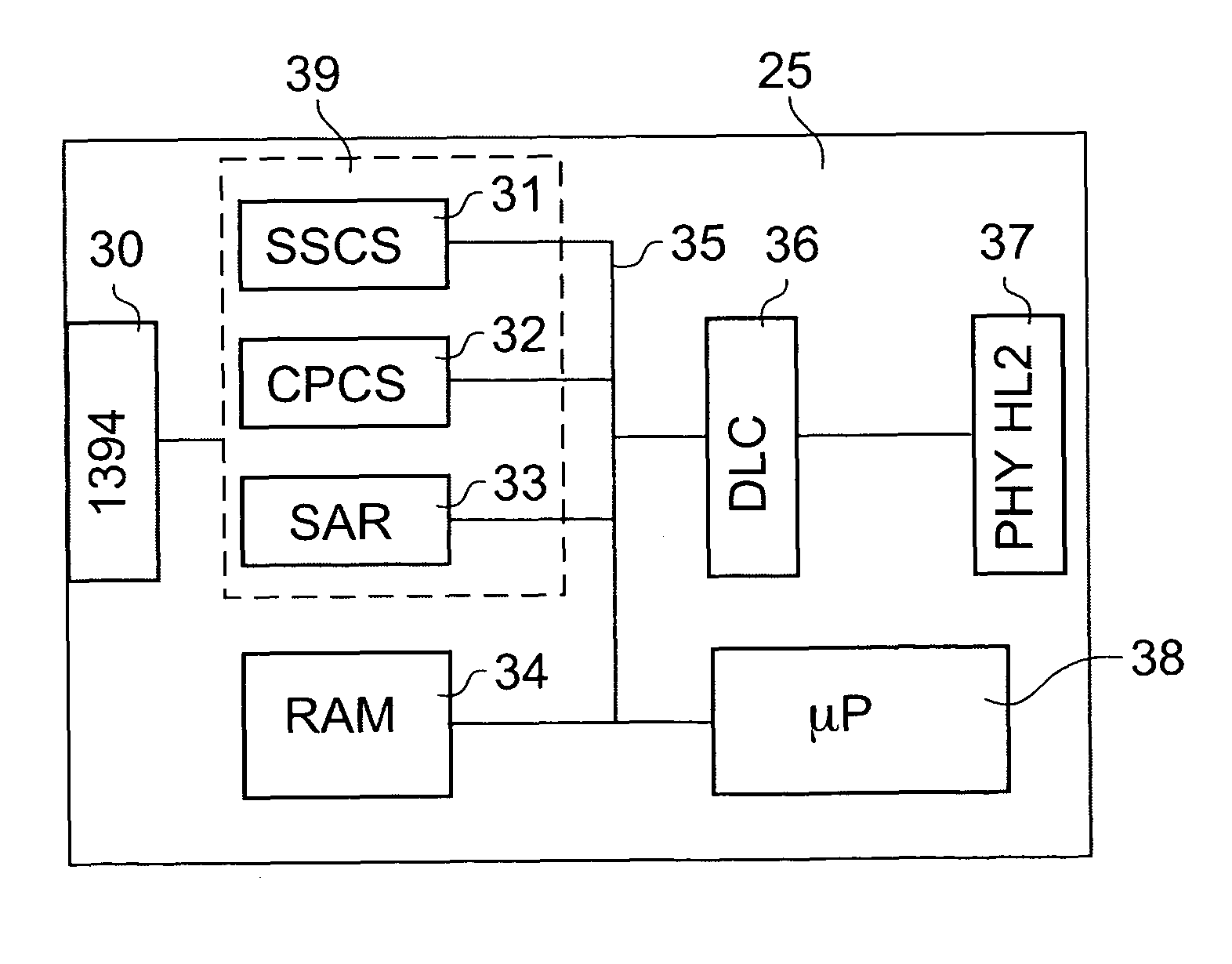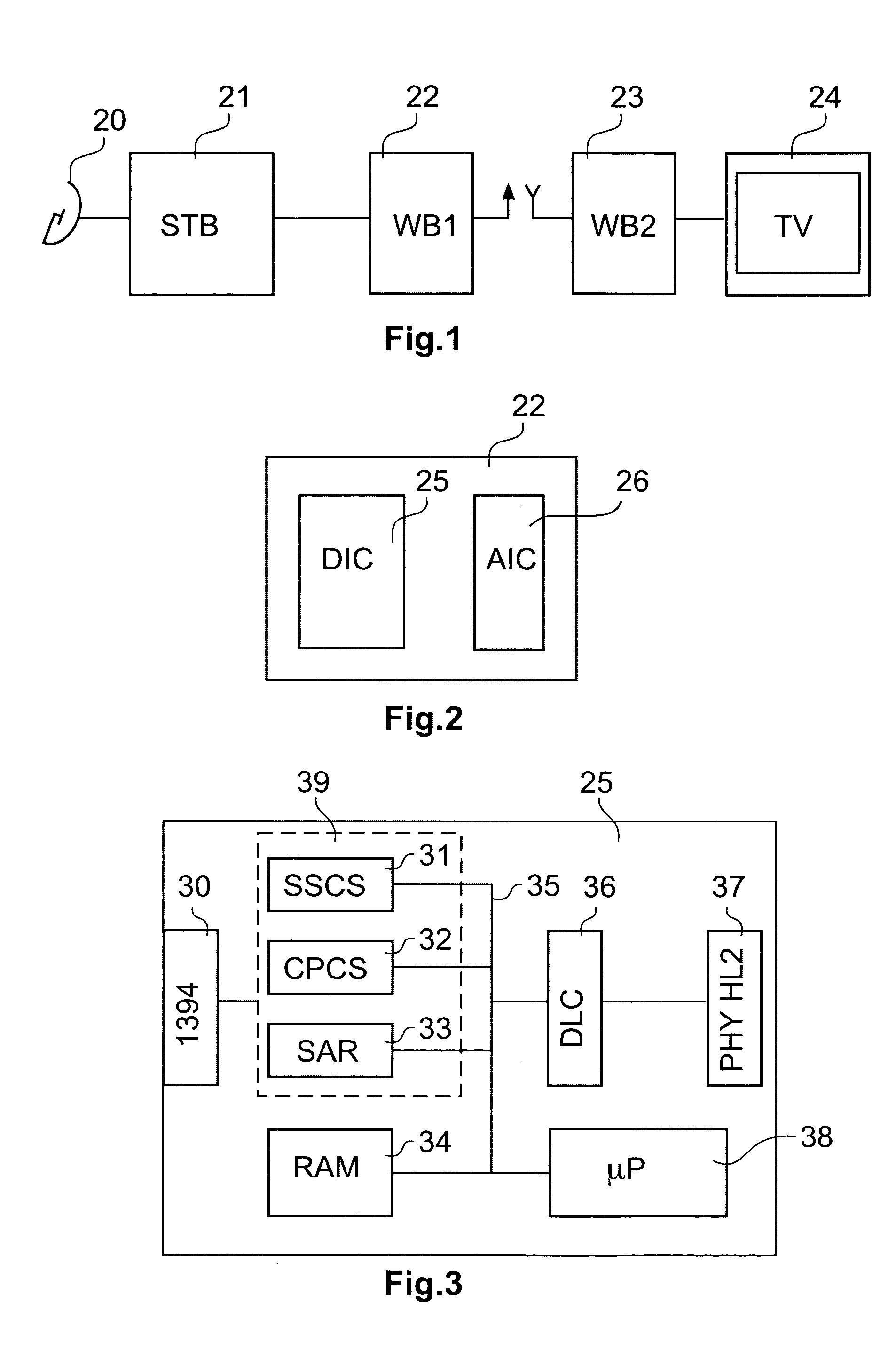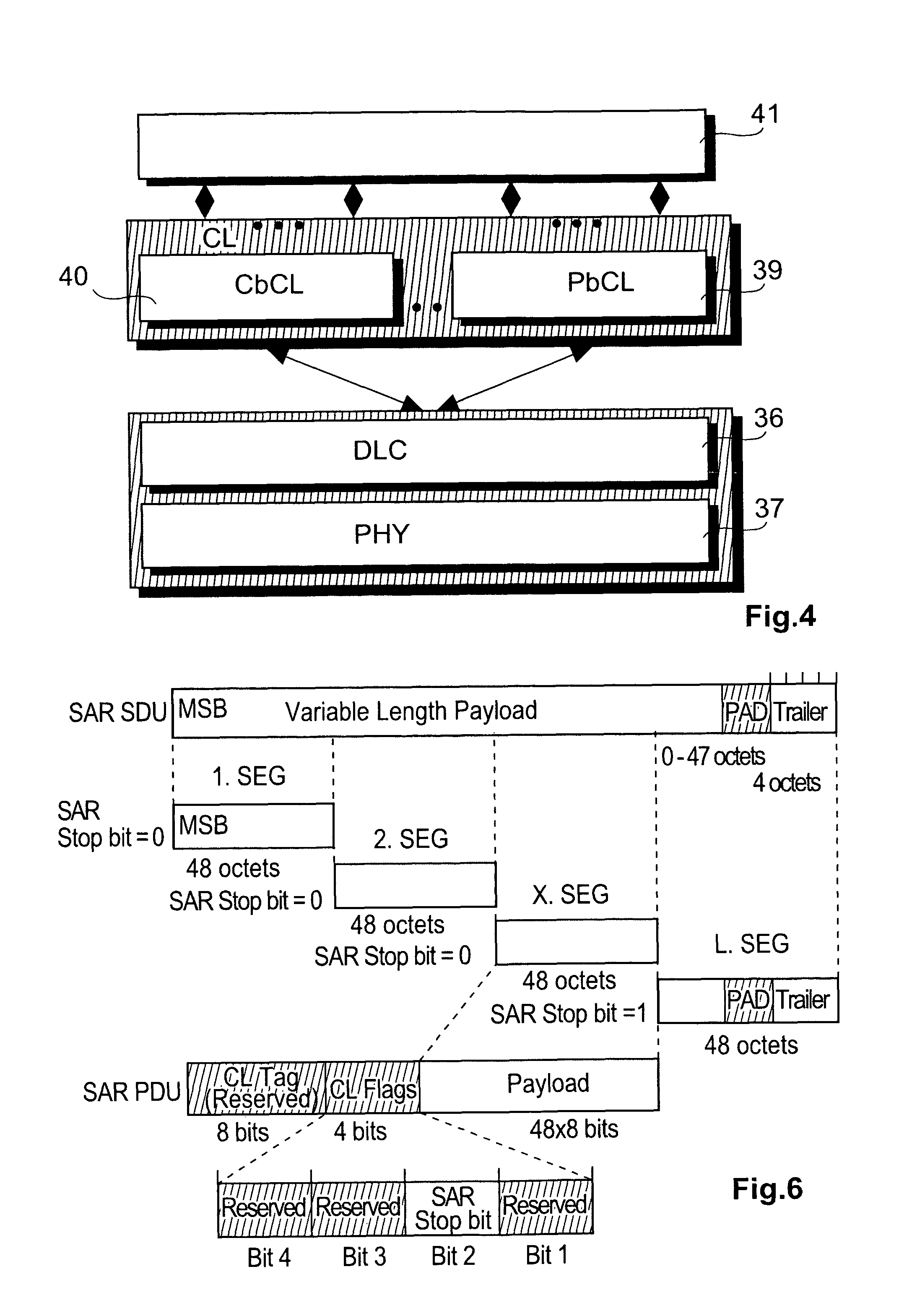Method for processing data packets received via a first interface and device for carrying out the method
a data packet and first interface technology, applied in the field of data packet processing via a first interface and the device for carrying out the method, to achieve the effect of reducing the maximum delay tim
- Summary
- Abstract
- Description
- Claims
- Application Information
AI Technical Summary
Benefits of technology
Problems solved by technology
Method used
Image
Examples
Embodiment Construction
[0025]FIG. 1 shows the application of data transmission from a set-top box for digital television which is located in one room to a television in another room. The digital television signals are fed to the set-top box 21 via a satellite receiving antenna 20. Said set-top box forwards the received data stream to a transmitting unit 22 located in the room, which is often also referred to as a wireless box (WB) and represents a bridge to the wireless transmission system. The transmitting unit 22 is connected to a transmitting antenna, via which it emits the data stream (it can include video and audio data) wirelessly by means of electromagnetic waves. The radio signals are received by a second wireless box, for example one located in another room, namely by the receiving station 23, which is equipped with a receiving antenna for this purpose. The receiving unit 23 has a wired connection to a television set 24, which is likewise internally equipped with a decoding unit for digital telev...
PUM
 Login to View More
Login to View More Abstract
Description
Claims
Application Information
 Login to View More
Login to View More - R&D
- Intellectual Property
- Life Sciences
- Materials
- Tech Scout
- Unparalleled Data Quality
- Higher Quality Content
- 60% Fewer Hallucinations
Browse by: Latest US Patents, China's latest patents, Technical Efficacy Thesaurus, Application Domain, Technology Topic, Popular Technical Reports.
© 2025 PatSnap. All rights reserved.Legal|Privacy policy|Modern Slavery Act Transparency Statement|Sitemap|About US| Contact US: help@patsnap.com



